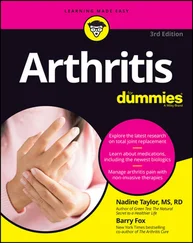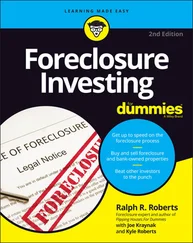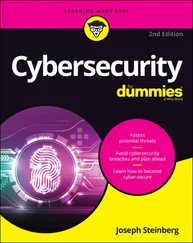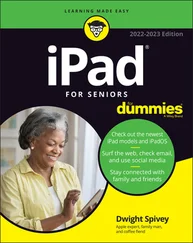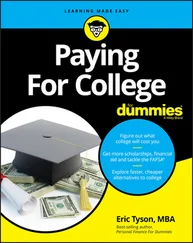When the children were little, we instituted a 7:30 p.m. bedtime rule. Bedtime occurred at 7:30 p.m. with no arguments. The only exception was if the children wanted to read in bed. Then they still had to go to bed, but their lights-out time was extended to 8:30. This gave them a fair amount of time to immerse themselves in books, relax a little before trying to drop off to sleep, and pursue our goal of building good readers.
Children who learn to read the “Teach Your Child to Read in 100 Easy Lessons” way cannot read anything else (such as library books) until they nearly complete it. DISTAR books are long out of print. When this method was first designed, it included storybooks rewritten using the DISTAR alphabet at several reading levels so the children could actually practice their reading with additional materials. Those materials are no longer available. The book is available through bookstores, and you can download additional printout materials from the Start Reading website.
Once your child can read, she can read. Reading does not require eight years’ worth of classroom readers to accomplish this seemingly awesome feat. Graded classroom readers are boring and they only introduce 200 to 300 new words per year on the average. Use your library card and practice reading for free.
 If your children have books in their rooms, you may want to rotate them periodically (the books, not the children). A couple times per year, I go into the bedrooms and pull out the generic reading material below their current reading levels, replacing these books with others just above their reading level. That way the handiest books, those next to the bed, are at least comparable to their understanding if not a bit challenging. The pulled books then get returned to the family library shelves so that if they must read Clifford one more time, he’s still available. (Indiscriminately throwing out books in a family of readers is akin to mutiny.)
If your children have books in their rooms, you may want to rotate them periodically (the books, not the children). A couple times per year, I go into the bedrooms and pull out the generic reading material below their current reading levels, replacing these books with others just above their reading level. That way the handiest books, those next to the bed, are at least comparable to their understanding if not a bit challenging. The pulled books then get returned to the family library shelves so that if they must read Clifford one more time, he’s still available. (Indiscriminately throwing out books in a family of readers is akin to mutiny.)
Once the children learn to read, you need to incorporate language, literature, grammar, writing, and the rest of the language arts panorama. This can be as simple or as complicated, as seamless or as segmented, as you choose. Several good, solid language arts curricula exist to help you build from a strong foundation. Here are a few of them.
Brave Writer: ( www.bravewriter.com ) Homeschoolers who love this curriculum refer to “the Brave Writer lifestyle.” Tuesdays mean Poetry Tea, where everyone gathers around a table with a favorite poem, a snack, and a favorite drink, hot or cold. Wednesdays bring Movie Day, when a home movie viewing leads to conversation about plot, character development, and falling action. The Brave Writer family of products goes from kindergarten all the way through twelfth grade. Jot It Down, for ages 5 to 8, starts the ball rolling with ten month-long projects (writing a fairy tale, designing a poster, writing letters). If you want in-depth literature study, that comes in the form of monthly reading guides: You select a book guide, or subscribe to a year’s worth of titles, and they lead you through teaching literary conventions, grammar, dictation, and more. The main guiding text, The Writer’s Jungle, guides you in teaching the art of writing. While not for everyone, my youngest nonwriter has bloomed with this method and he sets his weekly calendar by our Poetry Teatime.
Core Knowledge: ( www.coreknowledge.org ) This language arts curriculum draws on material from history, science, and literature. Most of the materials are available for free download from the website; be sure to download the sequence document that explains what each grade level learns in language arts (and in all other areas of the Core Knowledge curriculum). Covers K through grade 8.
Essentials In Writing: ( www.essentialsinwriting.com ) If English really isn’t your thing, this curriculum comes to your rescue. Each level teaches writing and grammar skills via a DVD or Internet streaming. Your student also gets a workbook where she practices everything she learns. These lessons are short, but they’re designed that way so that the students learn in small increments. Covers grades K through 12. A literature course is available for grades 7 through 12 as well.
Going on to the heavy hitters
After your child learns to read, an entire vista of possibilities opens to her. She can pursue a topic that she loves, whether it’s ballet, bonsai, or Bangkok. And even more delightfully, she now does it without you reading each article in Bangkok Today aloud to her. Isn’t life wonderful?
 You still need to keep an eye on your child as he peruses the public library because when his reading level increases through the sheer practice of reading, he finds himself drawn to adult reading material. Although all adult material isn’t bad, much of it is a bit unsavory — especially for your 10- or 12-year-old. Simply because your child can read at an adult level doesn’t mean that he’s ready for adult language, topics, and situations.
You still need to keep an eye on your child as he peruses the public library because when his reading level increases through the sheer practice of reading, he finds himself drawn to adult reading material. Although all adult material isn’t bad, much of it is a bit unsavory — especially for your 10- or 12-year-old. Simply because your child can read at an adult level doesn’t mean that he’s ready for adult language, topics, and situations.
On the other hand, he really can go beyond Curious George when he’s ready. Here are some authors who write kid-friendly novels in advanced language:
Lloyd Alexander: Known for his medieval-themed fantasies, Alexander’s The Black Cauldron was made into a full-length animated feature by Disney. Students who enjoy the series may like Alexander’s Prydain Chronicles, a tale that spans several volumes and begins with The Book of Three .
Daniel Defoe and Robert Louis Stevenson: Who can forget Robinson Crusoe or Treasure Island ? These books spark the imaginations of readers everywhere.
Sir Arthur Conan Doyle: His Sherlock Holmes serial mysteries are now compiled into several volumes, and provide great deductive reading for the mystery buff. My 10-year-old reads Sherlock Holmes with a magnifying glass in his pocket (to add to the atmosphere, I do believe).
J.R.R. Tolkien: The Lord of the Rings trilogy remains one of the most popular series ever written, and outside the trilogy, Tolkien’s The Hobbit introduces many of the characters your child will meet in the Rings books while telling the story at a slightly lower reading level.
Henry Winterfeld: Two of his books, Detectives in Togas and Mystery of the Roman Ransom, follow a group of Roman schoolboys through mystery and adventure. Household favorites, I was delighted to find these still in print.
Eating Your Way through Math
For many children, math is a pretty ethereal subject. After all, you’re working with symbols that may (or may not) mean something to the child, and expecting him to take these symbols, read the code sign between them, and correctly come up with a new symbol. Is it any wonder so many children have problems with math?
You understand the symbols because you’ve done math for years, but if the code doesn’t click with your child, he’s going to have problems discerning the answers to the numbers on the page. Your goal is to make those symbols mean something. After the symbols have meaning, then true math learning takes place.
 Just because your child can count to 100 by rote doesn’t mean that she understands what 100 may stand for. How many times did you hear the age-old ABC song before your child had any clue what those letters actually stood for? She sang the song, you applauded, and so she sang it again with even more gusto. The same can be true for counting by rote (1, 2, 3 … 98, 99, 100!).
Just because your child can count to 100 by rote doesn’t mean that she understands what 100 may stand for. How many times did you hear the age-old ABC song before your child had any clue what those letters actually stood for? She sang the song, you applauded, and so she sang it again with even more gusto. The same can be true for counting by rote (1, 2, 3 … 98, 99, 100!).
Читать дальше
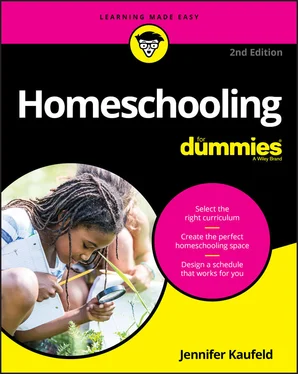
 If your children have books in their rooms, you may want to rotate them periodically (the books, not the children). A couple times per year, I go into the bedrooms and pull out the generic reading material below their current reading levels, replacing these books with others just above their reading level. That way the handiest books, those next to the bed, are at least comparable to their understanding if not a bit challenging. The pulled books then get returned to the family library shelves so that if they must read Clifford one more time, he’s still available. (Indiscriminately throwing out books in a family of readers is akin to mutiny.)
If your children have books in their rooms, you may want to rotate them periodically (the books, not the children). A couple times per year, I go into the bedrooms and pull out the generic reading material below their current reading levels, replacing these books with others just above their reading level. That way the handiest books, those next to the bed, are at least comparable to their understanding if not a bit challenging. The pulled books then get returned to the family library shelves so that if they must read Clifford one more time, he’s still available. (Indiscriminately throwing out books in a family of readers is akin to mutiny.) You still need to keep an eye on your child as he peruses the public library because when his reading level increases through the sheer practice of reading, he finds himself drawn to adult reading material. Although all adult material isn’t bad, much of it is a bit unsavory — especially for your 10- or 12-year-old. Simply because your child can read at an adult level doesn’t mean that he’s ready for adult language, topics, and situations.
You still need to keep an eye on your child as he peruses the public library because when his reading level increases through the sheer practice of reading, he finds himself drawn to adult reading material. Although all adult material isn’t bad, much of it is a bit unsavory — especially for your 10- or 12-year-old. Simply because your child can read at an adult level doesn’t mean that he’s ready for adult language, topics, and situations. Just because your child can count to 100 by rote doesn’t mean that she understands what 100 may stand for. How many times did you hear the age-old ABC song before your child had any clue what those letters actually stood for? She sang the song, you applauded, and so she sang it again with even more gusto. The same can be true for counting by rote (1, 2, 3 … 98, 99, 100!).
Just because your child can count to 100 by rote doesn’t mean that she understands what 100 may stand for. How many times did you hear the age-old ABC song before your child had any clue what those letters actually stood for? She sang the song, you applauded, and so she sang it again with even more gusto. The same can be true for counting by rote (1, 2, 3 … 98, 99, 100!).

